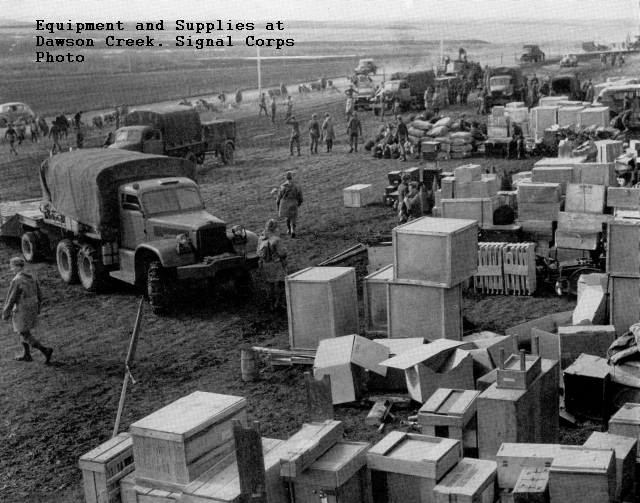
A giant conveyor took the soldiers and equipment of the 35th Engineers from the icy crossing of the Peace River to Fort St. John, 300 miles away.
Resourceful Canadian, E. J. Spinney had worked out the conveyor method for moving material up the rugged winter road. In March 1942 Colonel Ingalls, commander of the 35th Engineers, took a leaf from Spinney’s book. Ingalls divided the 300 miles between Fort St John and Fort Nelson into 3 one hundred-mile sections, and set up what amounted to a giant conveyor belt.
Each section had a base camp with a roving tow truck; stockpiles of fuel and oil; tents with cots, sleeping bags and stoves; and a 24-hour chow line.
Troops ‘walked’ an unbroken line of bulldozers, graders and loaded 2 ½ ton trucks down the steep and crooked hill to the frozen Peace River. Once across the heaving ice and up the steep bank on the north side, the line negotiated the arduous three hundred miles to Ft. Nelson. At each base camp, relatively rested and fed troops replaced exhausted ones, and the ‘belt’ kept moving. From Fort Nelson, the ‘belt’ returned to Dawson Creek to reload and repeat the trip.

A pilot looking down from the air at the winter march of the 35th compared it to Fifth Avenue in New York.
Periodically warming temperatures softened the ice and turned the road surface into thick, sticky mud, drastically slowing the great conveyor and threatening to bring it to a halt. Then the temperature would plummet, the ice and the road surface would harden, and the conveyor would return to speed.